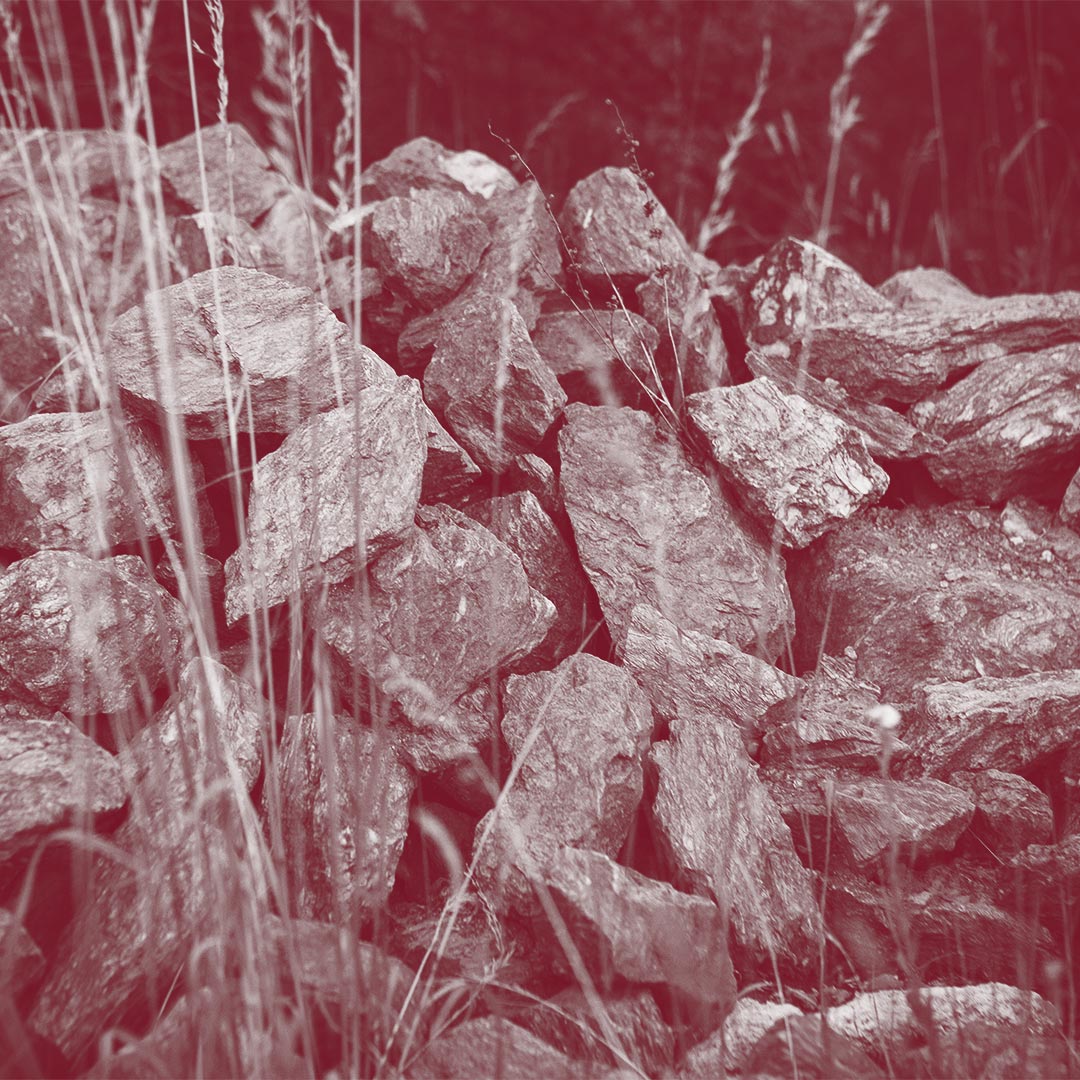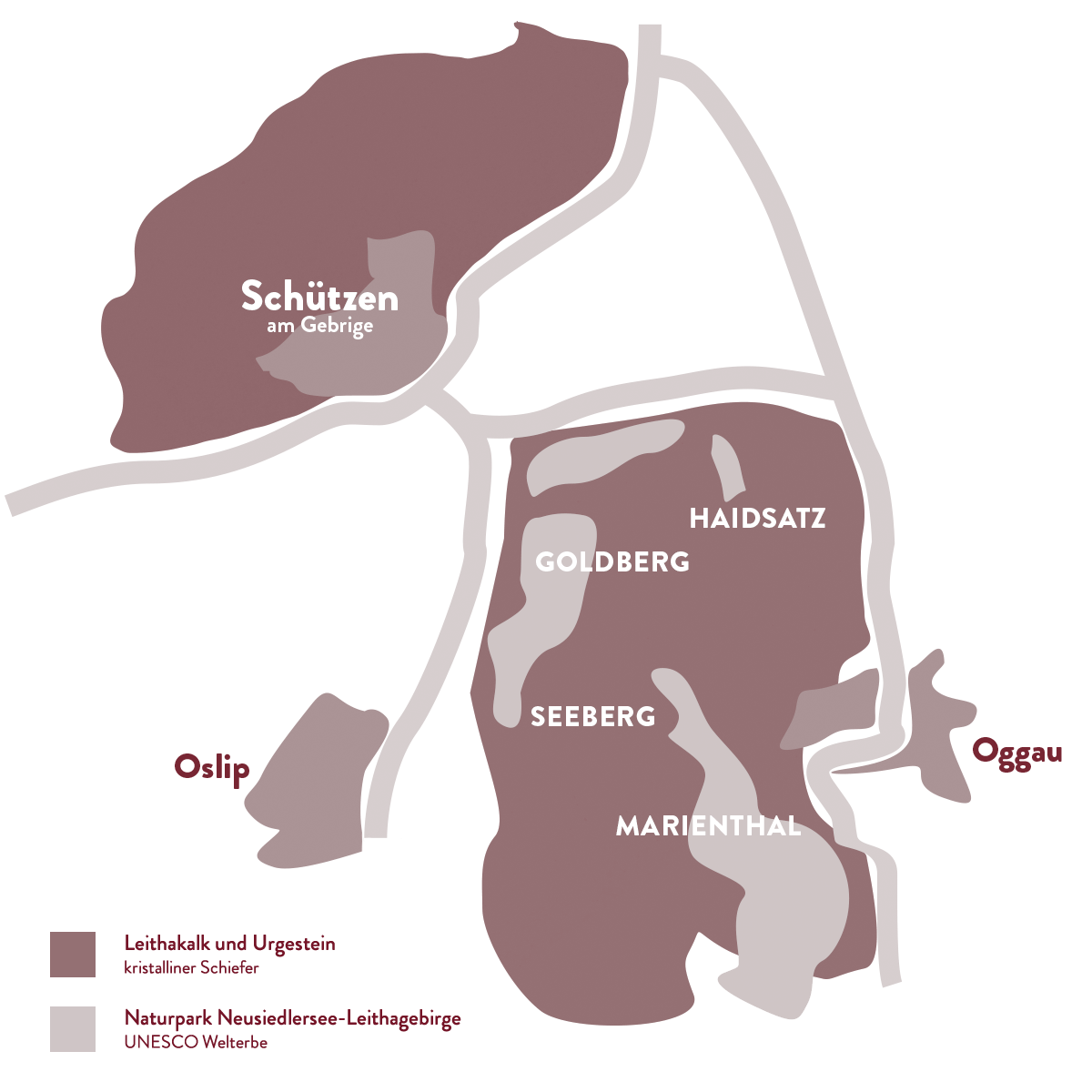Where my wine thrives.
Sites
Sites

My vineyards are located on plateaus, in the plain and on slopes that mostly slope down in gentle waves. Their soils are mostly stony, but sometimes deep, often sun-drenched and warm, but occasionally cool and shady. Some are suitable for Blaufränkisch and Sankt Laurent others for Pinot Blanc and Chardonnay, many are based on limestone some on slate and still others on brown earth. All have their own history. You just have to give them the opportunity to tell it.

Ried Goldberg
Goldberg is the undisputed best site in Schützen am Gebirge and was first documented as early as 1555. The name speaks volumes. But you could also replace the gold in the mountain with mica slate. Because that is what the site is built on. The Goldberg faces away from the lake and is exposed to cool thermals blowing along the Leithagebirge from the north. Since slate soils warm up easily, there is a warm-cold contrast, albeit under the opposite sign: cold soil + warm air = Marienthal, warm soil + cool air = Goldberg. The resulting large difference in temperature is also reflected in the wine.
Due to its special soil conditions and microclimate, the Goldberg is an ideal site for glowing Blaufränkisch wines with impressive aromatic diversity and immense potential.
"If you rub two stones together in the summer, you can smell the flint and graphite that you also find in wine"
Georg Prieler.
Marienthal reed
The Marienthal vineyard, whose current name dates back to 1881, is one of the best-known and oldest sites around Lake Neusiedl. Even before that, the vineyard was apparently the talk of the town. In 1476, for example, it was known as "Marchteil", which derives from the Old High German "Mark" and means "border". The locals call the 10.3-hectare site "Moaritoal".
If you look from Marienthal towards the east, Lake Neusiedl spreads out in front of you and behind it the Pannonian plain. If you look at the ground, however, you will see chalky sand and small lumps of chalk. A metre below you will find chalk, especially in the relatively steep Oggau part of the Marienthal, where my sticks are.
Warm Pannonian air masses, which force growth, meet a cool soil here, which slows down growth. This tension gives rise to wines that are also characterised by antagonism. Immense power is cushioned by lively acidity, powerful tannins, a robust, straightforward texture and an intense play of fruit.
Reed Haidsatz
The Haidsatz vineyard looks far back into history. You can find it in documents from the 15th century, where it is praised as a particularly good vineyard. Particularly suitable for well-founded white wines, it had to leave the limelight to other vineyards during the decades of the Burgenland red wine boom. Only in recent years has it slowly re-emerged on the scene with multi-layered and expressive wines. It rests on a mixture of lime and slate, more precisely on a lime base over a slate slab. It is positioned in the middle of the Schützner Steins, where it opens up to cool north-easterly winds that positively delay ripening and give the Pinot Blanc that grows there a juicy texture and a powerful backbone.
Reed Seeberg
Riede Seeberg is a plateau 50 metres above Schützen and 180 metres above sea level. Millions of years ago, the sea still lay above the Riede, leaving behind fossils and shells as it retreated, which today form the foundation of the enormous limestone bedrock. Thanks to its geological formation, the soil absorbs precipitation, but also stores it perfectly and thus promotes the nutrient supply of the vines. The topographical sourcing as a plateau guarantees the vines sun and wind all day long, warming and cooling effects, both of which are reflected in the wine.



